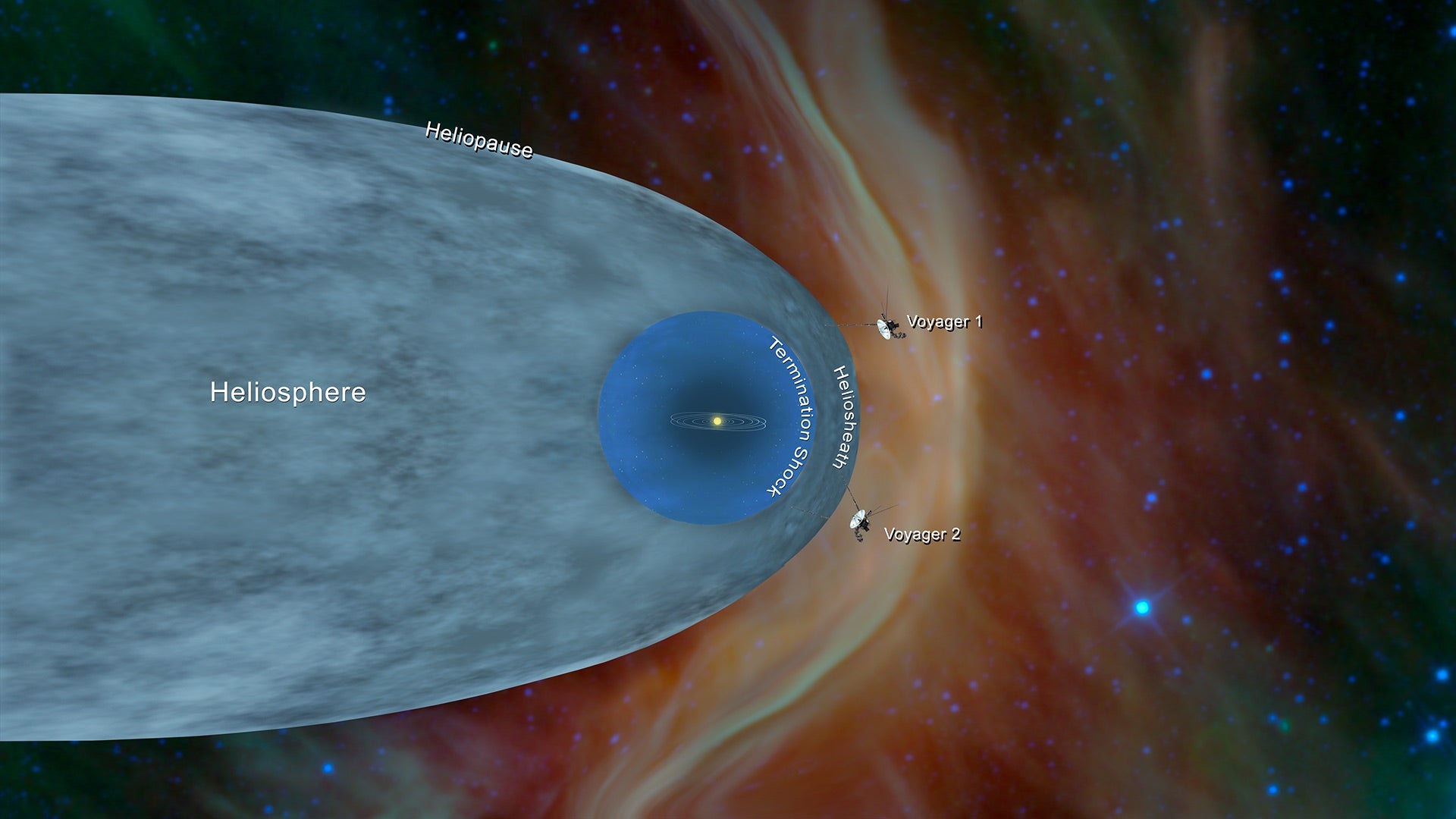Voyager 2: Nasa announces pioneering spacecraft has left the Solar System
'We’re still seeing things that no one has seen before'
Your support helps us to tell the story
From reproductive rights to climate change to Big Tech, The Independent is on the ground when the story is developing. Whether it's investigating the financials of Elon Musk's pro-Trump PAC or producing our latest documentary, 'The A Word', which shines a light on the American women fighting for reproductive rights, we know how important it is to parse out the facts from the messaging.
At such a critical moment in US history, we need reporters on the ground. Your donation allows us to keep sending journalists to speak to both sides of the story.
The Independent is trusted by Americans across the entire political spectrum. And unlike many other quality news outlets, we choose not to lock Americans out of our reporting and analysis with paywalls. We believe quality journalism should be available to everyone, paid for by those who can afford it.
Your support makes all the difference.Nasa's pioneering Voyager 2 spacecraft has gone interstellar.
The craft – which left Earth in 1977 and has been flying through space ever since – becomes only the second ever man-made object to make it out of our galactic neighbourhood.
It follows Voyager 1 in venturing out into interstellar space, according to Nasa's Ed Stone, who made the announcement at a meeting of the American Geophysical Union.
Voyager 2 takes with it a pioneering instrument that send back observations of this uncharted part of space, beaming them over 11 billion miles to Nasa scientists. Mission operators are still able to communicate with the spacecraft but it takes information – moving at the speed of light – a full 16.5 hours to make the long journey.
Nasa declared the spacecraft had left when the onboard Plasma Science Experiment (PLS) showed that it was no longer detecting the plasma flowing out the sun. That outflow creates a bubble called the heliosphere, which envelopes the planets of the solar system and represents the edge of the solar system.

“Working on Voyager makes me feel like an explorer, because everything we’re seeing is new,” said John Richardson, principal investigator for the PLS instrument and a principal research scientist at the Massachusetts Institute of Technology in Cambridge.
“Even though Voyager 1 crossed the heliopause in 2012, it did so at a different place and a different time, and without the PLS data. So we’re still seeing things that no one has seen before.”
As well as the plasma data, Voyager 2 is still sending back other information that confirmed the fact it has left the Solar System and will prove useful to scientists studying interstellar space. That region, known as the "heliopause" because it exists at the very edge of the Sun's influence, is still largely unknown to scientists.
“There is still a lot to learn about the region of interstellar space immediately beyond the heliopause,” said Ed Stone, Voyager project scientist based at Caltech in Pasadena, California.
When Voyager 1 left the heliosphere, scientists had trouble determining whether it had actually crossed over the border, which ran for years. But that was because the plasma sensors on that spacecraft had broken, and Voyager 2 can far more accurately sense whether it still has the sun's winds buffeting its back.
The two Voyager spacecraft set off in 1977, taking advantage of an unusual alignment of the Solar System's planets to head further away from Earth than any other man-made object. They have been studying space ever since, and Voyager 2 is the only spacecraft to ever get close up to all four of the solar system's giant planets.

Join our commenting forum
Join thought-provoking conversations, follow other Independent readers and see their replies
Comments